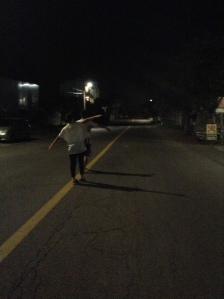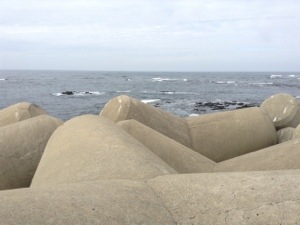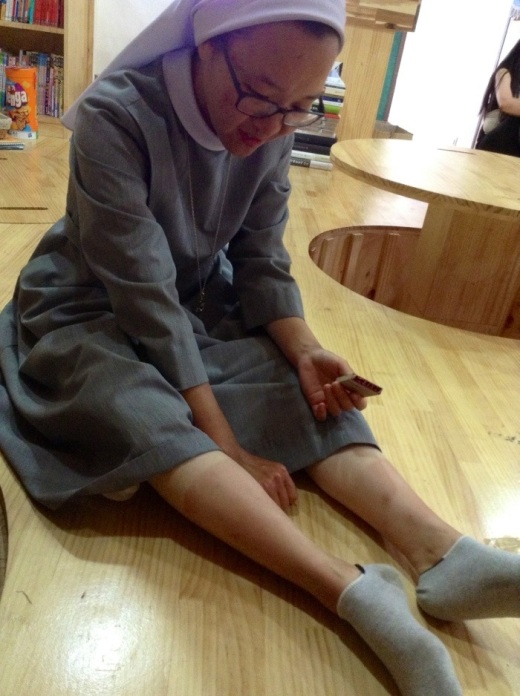Day 13 in Gangjeong Village
“The people united will never be defeated.” This universal chant is heard at rallies all over the world. On Wednesday, this statement was solidified as over 100 college students and farmers from mainland Korea joined the daily mass and songs in front of the construction gate. In addition to the several priests and nuns that typically block the gate during each mass, huge crowds of students and farmers joined that morning. Amazingly, police officers in several coach buses stayed out of sight for over an hour while several trucks, cars, and vans were blocked from coming in and out of the construction site. The usual struggle between police and anti-base activists was avoided that day thanks to the largest turnout Gangjeong Village has seen in quite a while.
Typically, about 50 officers show up to move the members of the Catholic Church from blocking the gate. As it takes abut five officers to move each activist and about 10 officers to then form a barrier to prevent one from moving again, the police had no means to control the unexpected crowd on Wednesday. This sudden support and the surprising reaction (or unresponsiveness) by police was immensely refreshing. Many expressed a desire to have such support more often to fortify the anti-base campaign. Regardless, it seems that strength truly depends on numbers, and when the oppressed can publicly outnumber the oppressors, perhaps we can then regain justice and maintain peace.
To continue to show the widespread, collective support against the naval base construction, an estimated 500 people from Jeju, the mainland Korea as well as those from other nations (Taiwan, America, etc.) will join the march around the island. Those marching will take off at 9:00AM on Monday, and two teams will take off towards either the East or the West to meet at Jeju City on Saturday, August 3 for the Peace concert. The opening ceremony tonight was full of energy as participants from near and far with sleeping bags to prepare for the week ahead. Much of the community in Jeju will join along the way, and many will be there for the full six days of the march.
A peace festival will be held in Gangjeong Village on Sunday, August 4 as hundreds will hold hands to form a human chain around the construction site at 12 noon. International messages of solidarity from those unable to join physically will be displayed. The human chain will signify a demand pf peace for Jeju and Gangjeong as well as justice and freedom for the four activists currently in prison. Click here for more information on the human chain. For more information on the weeklong march, click here. To send an international message of solidarity, e-mail gangjeongintl@gmail.com (with a photo or a message 100 words or less).
The photos below include pictures from the past week =)






































![1drydc0t66jxm[1] the peace truck & peace center](https://savejeju.files.wordpress.com/2013/07/1drydc0t66jxm1.jpg?w=162&resize=162%2C121&h=121#038;h=121)

